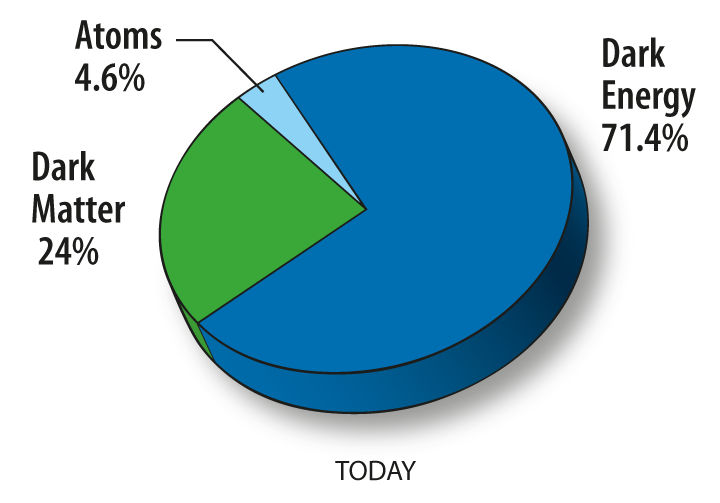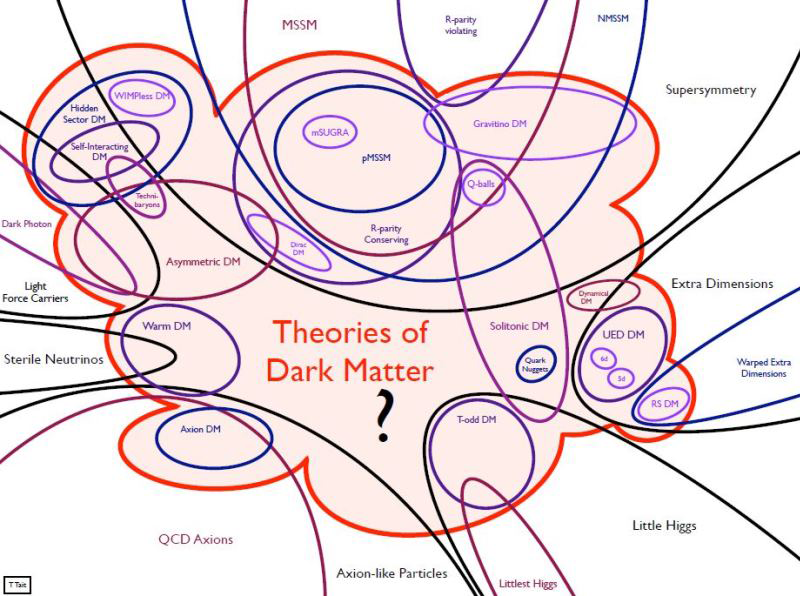
On March 29, Presidential Scholar Chanda Prescod-Weinstein gave a talk in the Science Center called “Cosmic Probes of the Dark Sector.” Prescod-Weinstein is an Assistant Professor of Physics and Core Faculty Member in Women’s Studies at the University of New Hampshire. She began her talk by telling the audience that “there are no stupid questions, only questions that are easy for me to answer, questions that are hard for me to answer, and questions that I don’t know the answer to.” With this reassurance for audience questions, she introduced her own guiding questions for the talk: what cosmological phenomena do we need to understand? What is the dark matter problem? And, if the dark matter is the axion, what does that mean for cosmological phenomena?
Prescod-Weinstein introduced herself as a particle cosmologist, someone who “connect[s] very big with very small” things to construct a cosmological timeline of the universe. She points out that we do not know what happened at the beginning of the universe. It was a collection of particle plasma stew, through which a particle of light couldn’t go anywhere without hitting something else. When the first neutrons and hydrogen atoms formed, it was the first time that light could travel freely through the universe. With the help of the Wilkinson Microwave Anisotropy Probe (WMAP) experiment, scientists can see the light from this time. Prescod-Weinstein asks, how do we get from a “little bit of extra stuff” at the beginning of the universe to where we are now? It is the job of scientists to come up with a coherent narrative.
Prescod-Weinstein uses the analogy of an invisible man in a suit and hat to illustrate that the universe is organized by what we can’t see. We can see the effects of the substance, but not the substance itself.

What we think the universe is made of is actually a small percentage of what is actually there. The visible or luminous matter is a very small fraction of the universe. As she put it, “we are the cosmic weirdos.”

Even though we can now understand this breakdown, we do not fully understand the implications of dark matter or dark energy or even exactly how they function. There seems to be energy associated with “empty space-time,” since space-time is accelerating as it pushes outward. Prescod-Weinstein stressed that if we were to remember nothing else from this talk, we should know that dark matter behaves like luminous matter under gravity, while dark energy does not.
The case for dark matter is that it seems to need more mass than we can currently observe in order to create the effects we can observe. It is possible that there is a sort of modified gravity taking place in this situation. Dark matter produces no light, so the only significant interaction it has is with gravity. When scientists conducted an experiment to measure how fast stars are orbiting, the M33 rotation curve that resulted showed a disparity between the expected line and the observed one; if there were no dark matter, the lines would match up. The mass was assumed to be generated from photons, but the results indicate that there is a bunch of matter with no photons.

Prescod-Weinstein suggests that a more appropriate name for this substance might be invisible matter. She explains the concept of dark matter by saying that if she were holding dark matter, she would feel the weight, but we would not see anything because photons go right through it and reflect off her hand.
The galaxy-halo connection claims that the visible stars of the galaxy are contained within a central spiral disk. There is a halo of dark matter surrounding this center. Within the halo and around the spiral disk are sub-halos of dark matter that contain other galaxies with spiral disks within them. Prescod-Weinstein says that we believe all galaxies exist within their own dark matter halo, but we are still trying to understand the relationship between the different parts.

Amidst all this uncertainty, it is helpful to revisit what we do know. We know that photons do not interact with dark matter much, that dark matter particles move slowly and are not short-lived, and that simulations of the data match on a large scale. These things are beyond standard model physics. This means dark matter is not the same matter as humans. This is a “deeply unsatisfying” definition, and Prescod-Weinstein wants a better one. She showed us the “Venn diagram to end all Venn diagrams,” which displays the theories of dark matter. She next showed us this mass scale of dark matter in order to conceptualize the different explanations. Her favorite explanation is the axion.

Axion dark matter introduces problems to the standard model in the form of a neutron electric dipole moment. This problem is solvable by introducing the Peccei-Quinn mechanism to the equation and then changing theta from a constant to a dynamical field. The thing is that scientists “have to come up with a theory that doesn’t break the rest of physics,” joked Prescod-Weinstein. There are viable theories, and there are natural and elegant theories, but one ultimately has to be correct. The relic quantum chromodynamics (QCD) axion was made in the early universe during the Peccei-Quinn symmetry-breaking. It is thermal, so it might have been made in stars. Axion-like particles (ALPs), otherwise known as ultralight axions or fuzzy dark matter, are particles with shift symmetries like an axion but may not be able to solve the QCD problems. This approach is motivated by string theory. They are all scalars with sinusoidal potential.
We also have to consider fermions vs. bosons for several reasons. Electrons cannot all go in the same energy level. Cool bosons all go towards the same place, forming a supercool atom that acts like a “super atom.” As you get below the target temperature, it becomes purer. These have been made in the lab. The question becomes, does axion dark matter form Bose-Einstein condensates? The sign of the interaction and mass determines coherence length. Ultralight axions are halos with solitons. So, the answer is yes! A QCD is in small, locally correlated solitons-bose stars/standing waves.
Now we have to ask how to form an axion Bose-Einstein condensate (BEC). Dark matter axions form BEC when they cool sufficiently, and this resulting condensate makes axions distinct among the other dark matter theories. Answering this question requires papers from the math field. Math shows that self-interactions can still have an impact. Since we are not certain how dark matter interacts with other forces, knowing that self-interactions can still create differences is important.
Prescod-Weinstein concluded by discussing Snowmass, a cosmic probe for dark matter. It is a national particle physics group that decides who gets funding to pursue further research. Prescod-Weinstein argues that using an astrophysics approach is important due to the reasons she laid out in her talk. She notes that tackling dark matter is the task of “making the invisible visible.” “Doing science takes a village,” she reminds us. If you find your community, they will help you succeed.
